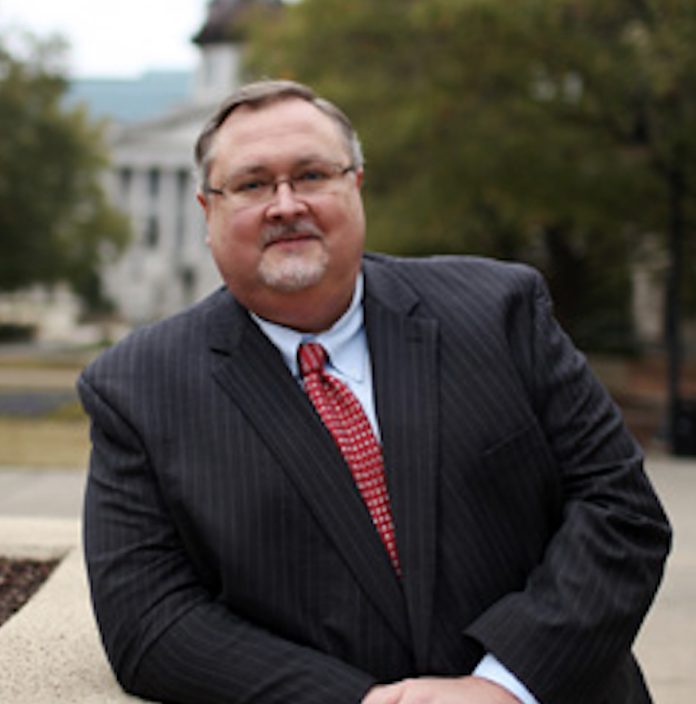By J. Mark Powell
Whenever a president wants to let down his hair these days, a brief chopper ride to Camp David in the Maryland mountains gives him all the solitude he needs.
Every chief executive since Franklin D. Roosevelt has stayed there. Joe Biden is particularly fond of the place. Yet, not everyone liked it. Donald Trump said it was “interesting for about 30 minutes.” Bess Truman found it dull. To each their own.
But a previous presidential getaway a century ago put the “rough” in roughing it. Literally.
This is the story of the short-lived Camp Hoover.
President Herbert Hoover is remembered for the extraordinarily bad luck of having the Great Depression start on his watch, the kind of thing that looks terrible on a presidential resume. But when he entered office in 1929, he was quite popular.
The first president born and raised west of the Mississippi River, Hoover had spent years living in mining camps as an engineer. The outdoors appealed to this most buttoned-down of presidents.
Soon after Hoover moved into the White House, he found the perfect location for escaping it: an ideal getaway at the Rapidan River’s headwaters on Doubletop Mountain in Virginia. Nearby Mill Prong and Laurel Prong streams offered ideal fishing. (Hoover was an avid angler, though also the kind of guy who fished while wearing a coat and tie.)
Virginians offered the land free. But Hoover wouldn’t hear of it. He insisted on personally paying the prevailing $5 an acre for 164 pristine acres, plus an additional $22,719 for materials. Marines provided free labor by labeling the construction project a “military exercise.” They built 13 buildings, including cabins, two mess halls, a lodge, a meeting place, and Hoover’s residence called the Brown House (to distinguish it from the White House). There were hiking trails, a miniature golf course, and trout pools where it was said the fish were so tame “they drift slowly out into the open to look you over.”
To save money, Hoover decommissioned the presidential yacht Mayflower and reassigned its mess crew and china to the camp. Its official name was Rapidan Camp. But everybody called it Camp Hoover.
It was so rustic, mail was delivered by dropping it from an airplane!
That didn’t stop the era’s Who’s Who from trekking there, including Thomas Edison, Edsel Ford, Gov. Theodore Roosevelt Jr., Winston Churchill and then-British prime minister Ramsay MacDonald. In a move foreshadowing Camp David’s later role as a place for delicate diplomatic negotiations, Hoover offered to cancel Britain’s World War I debt in exchange for the United States buying Bermuda, Trinidad and British Honduras. (MacDonald’s reply: “Thanks, but no thanks.”)
In August 1929, Hoover’s doctor met a mountain boy hiking through nearby woods. They struck up a conversation. The doctor was horrified to discover that neither the child nor his eight brothers and sisters had ever attended school because there wasn’t one nearby. The boy and some friends rode horses into Camp Hoover a few days later, giving the president a live possum as a birthday gift. (Anne Morrow Lindbergh, visiting with her husband Charles, was amused to learn the kids had never heard of the world-famous aviator.) Hoover was touched and personally funded a small school for poor local children.
Camp Hoover’s glory days didn’t last long. Defeated for re-election in 1932, Hoover gave the camp to the government. Franklin Roosevelt visited in 1933 but didn’t like it — the trails couldn’t handle his wheelchair, and the water was too cold for swimming.
The Boy Scouts used the place from 1946 until the early 1960s. By then, many of its cabins had rotted.
Still, VIPs kept coming. Jimmy Carter was the first president since Roosevelt to visit; when Vice President Walter Mondale was trapped there in a snowstorm, the Secret Service needed chainsaws to get him out. Vice President Al Gore also dropped by during his tenure.
The National Park Service restored the three remaining cabins (including the Brown House) in 2004 and renamed them Rapidan Camp. You can visit it today, either by hiking on foot or riding by van from a nearby visitor center.
Those who do relive a forgotten piece of presidential history in the same surroundings Herbert and Lou Hoover enjoyed nearly 100 years earlier.
J. Mark Powell is a novelist, former TV journalist and diehard history buff. Have a historical mystery that needs solving? A forgotten moment worth remembering? Please send it to [email protected].




